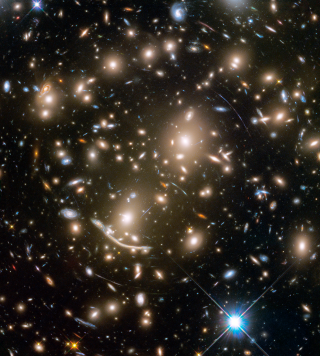Bibcode
San Roman, I.; Cenarro, A. J.; Díaz-García, L. A.; López-Sanjuan, C.; Varela, J.; González Delgado, R. M.; Sánchez-Blázquez, P.; Alfaro, E. J.; Ascaso, B.; Bonoli, S.; Borlaff, A.; Castander, F. J.; Cerviño, M.; Fernández-Soto, A.; Márquez, I.; Masegosa, J.; Muniesa, D.; Pović, M.; Viironen, K.; Aguerri, J. A. L.; Benítez, N.; Broadhurst, T.; Cabrera-Caño, J.; Cepa, J.; Cristóbal-Hornillos, D.; Infante, L.; Martínez, V. J.; Moles, M.; del Olmo, A.; Perea, J.; Prada, F.; Quintana, J. M.
Bibliographical reference
Astronomy and Astrophysics, Volume 609, id.A20, 38 pp.
Advertised on:
1
2018
Journal
Citations
16
Refereed citations
15
Description
We present a technique that permits the analysis of stellar population
gradients in a relatively low-cost way compared to integral field unit
(IFU) surveys. We developed a technique to analyze unresolved stellar
populations of spatially resolved galaxies based on photometric
multi-filter surveys. This technique allows the analysis of vastly
larger samples and out to larger galactic radii. We derived spatially
resolved stellar population properties and radial gradients by applying
a centroidal Voronoi tessellation and performing a multicolor photometry
spectral energy distribution fitting. This technique has been
successfully applied to a sample of 29 massive (M⋆ >
1010.5M⊙) early-type galaxies at z < 0.3
from the ALHAMBRA survey. We produced detailed 2D maps of stellar
population properties (age, metallicity, and extinction), which allow us
to identify galactic features. Radial structures were studied, and
luminosity-weighted and mass-weighted gradients were derived out to
2-3.5 Reff. We find that the spatially resolved stellar
population mass, age, and metallicity are well represented by their
integrated values. We find the gradients of early-type galaxies to be on
average flat in age (∇log AgeL = 0.02 ± 0.06
dex/Reff) and negative in metallicity
(∇[Fe/H]L = -0.09 ± 0.06 dex/Reff).
Overall,the extinction gradients are flat (∇Av = -0.03
± 0.09 mag/Reff ) with a wide spread. These results
are in agreement with previous studies that used standard long-slit
spectroscopy, and with the most recent IFU studies. According to recent
simulations, these results are consistent with a scenario where
early-type galaxies were formed through major mergers and where their
final gradients are driven by the older ages and higher metallicity of
the accreted systems. We demonstrate the scientific potential of
multi-filter photometry to explore the spatially resolved stellar
populations of local galaxies and confirm previous spectroscopic trends
from a complementary technique.
Based on observations collected at the German-Spanish Astronomical
Center, Calar Alto, jointly operated by the Max-Planck-Institut für
Astronomie (MPIA) at Heidelberg and the Instituto de Astrofísica
de Andalucía (CSIC).
Related projects

Kinematic, Structural and Composition Studies of the Interstellar and Intergalactic Media
The basic objective of the broject is to investigate the evolution of galaxies by deepening our understanding of the interaction between the insterstellar medium and the stars.The main technique which we use is the two-dimensional kinematic study of whole galaxies observed using our instrument:GHaFaS, a Fabry-Perot interferometer on the William
Prof.
John E. Beckman

Galaxy Evolution in Clusters of Galaxies
Galaxies in the universe can be located in different environments, some of them are isolated or in low density regions and they are usually called field galaxies. The others can be located in galaxy associations, going from loose groups to clusters or even superclusters of galaxies. One of the foremost challenges of the modern Astrophysics is to
Jairo
Méndez Abreu

Evolution of Galaxies
Galaxy evolution is a crucial topic in modern extragalactic astrophysics, linking cosmology to the Local Universe. Their study requires collecting statistically significant samples of galaxies of different luminosities at different distances. It implies the ability to observe faint objects using different techniques, and at different wavelengths
Jorge
Cepa Nogue